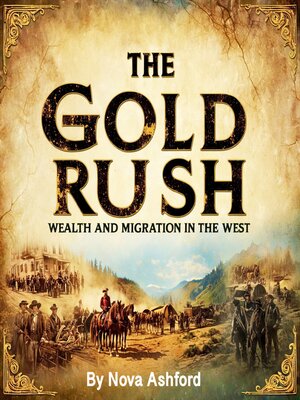
Sign up to save your library
With an OverDrive account, you can save your favorite libraries for at-a-glance information about availability. Find out more about OverDrive accounts.
Find this title in Libby, the library reading app by OverDrive.



Search for a digital library with this title
Title found at these libraries:
| Library Name | Distance |
|---|---|
| Loading... |
In the early months of 1848, the world changed when James W. Marshall, a carpenter working at John Sutter's mill in Coloma, California, made an accidental discovery that would set the stage for one of the most significant migrations in history. While overseeing the construction of a sawmill along the American River, Marshall noticed something unusual shining in the water. Upon closer inspection, he realized it was gold. This seemingly small find would ignite a chain reaction that would draw thousands of people from all over the world to California in search of wealth.
Marshall initially tried to keep the discovery a secret, as he knew the potential chaos it could cause. However, the lure of gold proved irresistible, and by the end of the year, word had spread. The news reached San Francisco, then a small but bustling port city, where rumors swirled about the newfound riches in the Sierra Nevada foothills. As the news continued to spread across the United States and beyond, the idea of striking it rich in California captured the imagination of many.
The first wave of miners, known as the "forty-niners," began their journey west in 1849, despite the challenges and hardships that lay ahead. They traveled overland on difficult wagon trains, braving rough terrain, sickness, and the constant threat of hunger and exhaustion. For those who could afford it, ships offered a quicker, though no less perilous, route around South America to the West Coast. The gold rush had begun, and California would never be the same.







